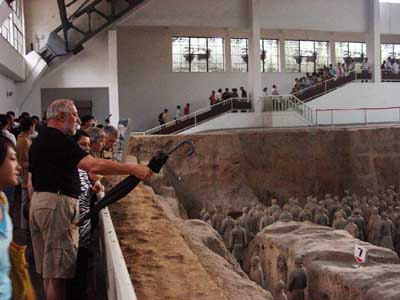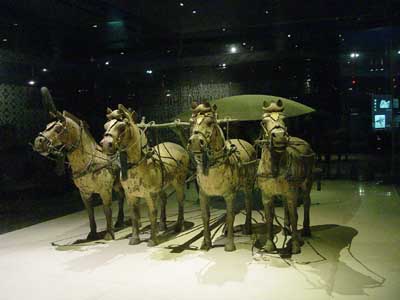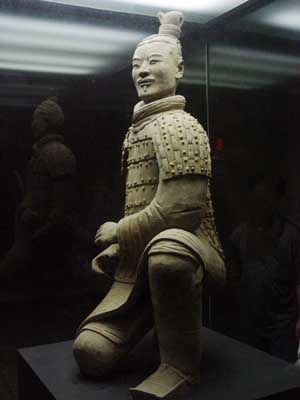"We have received some 20 percent more visitors compared to the same period of last year," said Cao Wei, deputy curator of the Mausoleum and Terracotta Army Museum of the First Qin Emperor.
The number of foreign tourists coming to see the Terracotta Warriors, located in the northwestern city of Xi'an, is stable. It's the growing number of domestic tourists that is contributing to the visitor increase. Thanks to the booming economy, more people are now able to afford leisure trips.
Although package tour groups still account for the majority of visitors, more private car owners are being seen driving here for a DIY visit, Cao Wei told China.org.cn.
On September 13 of this year, some 120 terracotta warriors will be exhibited at the British Museum in London, the curator revealed. The exhibition will run for seven months.
In 2006, the terracotta army museum recorded 2.6 million tourists, some 20 percent of them being from foreign countries.
The 2,200-year-old Chinese terracotta army buried around the mausoleum was one of the greatest archeological finds of modern times. It was discovered in Lintong County, 35 km east of Xi'an, in 1974 by farmers digging a well.
More than 1,000 life-size figures were found, representing the Emperor's army and including officers, horses, archers, and chariots. No soldiers in the army look alike; each of the sand-colored statues has a different facial expression and hairstyle, and craftsmen are believed to have modeled them after a real army.
The discovery, listed as a world heritage site by UNESCO in December 1987, has turned Xi'an, capital of Shaanxi Province, into one of the nation's major tourist attractions.
 |
 |
 |
(China.org.cn by Wang Zhiyong, August 31, 2007)